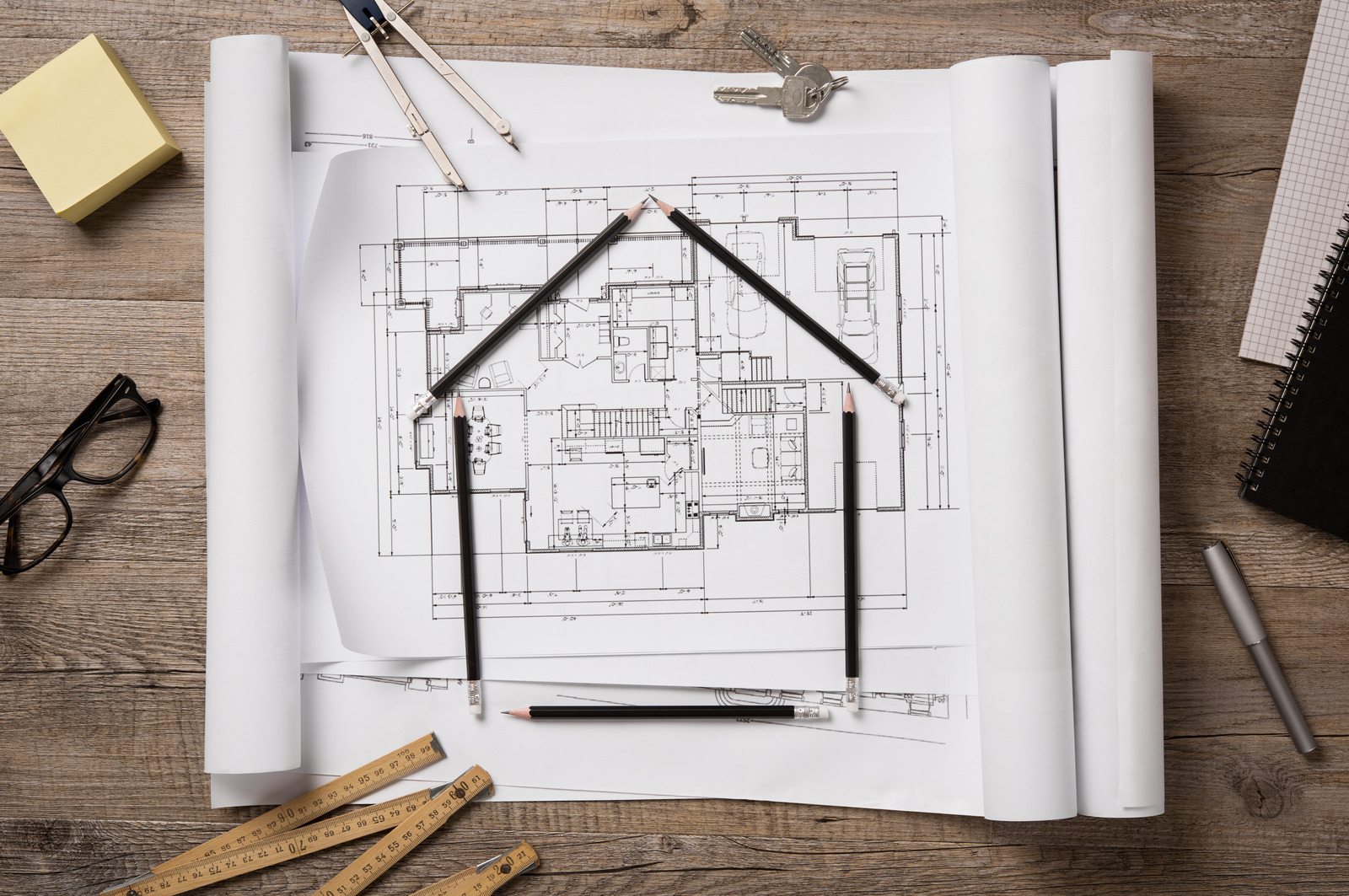TRIMBLE ARCHITECTS is a RIBA registerd architect firm based in West London.
Experienced RIBA Architect Bob Trimble explains how you can use an architect to help you with your building project.
Outside of very simple building work, you should speak to a qualified architect before you begin planning your project.
The advice offered by an architect will help you foresee potential problems and avoid unnecessary costs.
An architect will offer guidance on all aspects of the project from costs and design through to planning and construction.
WHY DO I NEED AN ARCHITECT?
1. Using an architect means that in almost every instance, you will end with a better outcome
2. A fully trained architect can see the bigger picture. They will have the experience to offer advice on how the designs will effect the mood, style and limitations of the new building.
3. Your architect will help you to make sure that all aspects of the work are completed by professionals. All parts will be encouraged to meet building control and be approved by a structural engineer if needed
4. An architect will have a great eye for detail. They will have years of experience to help them foresee potential problems that can be overlooked.
5. You can work with your architect to project manage the build to ensure that it comes within budget. As a project manager, they can also represent your best interests with local authorities and builders.
6. An architect is usually able to help you find the best builder for your project.
7. A qualified architect is subject to a statutory code of practice and will have Professional Indemnity Insurance to protect the interest of their clients.

HOW TO USE AN ARCHITECT
An architect will generally offer a full service for projects that have a budget of over £50,000. However, you can still get advice on smaller projects for a small fee.
The most common services offered by an architect are one-off consultations to provide useful information to help with your building design and construction. This offers a valuable insight into the work required and the process involved.
Initial meeting:
In general, you will not be charged for the first meeting with your architect. However, there is no obligation for an architect to offer their time for free.
Your initial meeting will usually be a short discussion of the ideas that you have for the project and what you hope to achieve.
The architect will let you know if they are able to complete this work for you.
You will not receive design advice or any further information as these are the services that you will be expected to pay for.
Writing a brief:
Writing a brief for a building project is one of the most important tasks in the success of the completed work.
The quality of the brief is essential in getting the best results from your architect. You will need to offer your architect everything required to plan your building work.
Your brief needs to specify all of the management and operation methods that you propose to use, along with the functions and requirements of the completed building.
The brief should include the following information for your architect:
– project aims
– project budget
– design style requirements
– intended activities for the completed building
– who is the decision-maker during the work
– general expectations of the completed build
Before submitting the brief, you will need to consider whether your new build is to be a contemporary style or does it need to fit in with an existing architectural look?
What are you looking to use the building for when it is finished? What activities do you expect to be using the space for? Are there any special requirements that should feature in the building to fulfil its desired purpose?
Consider the ultimate goal of the project. Are you hoping to improve the available space, increase light, make your building more flexible?
HELP WITH PLANNING PERMISSION
If you require planning permission for a building project, it is usually the case that you will need help from an architect.
Planning your project with a qualified architect from the beginning will help you avoid problems down the line such as planning applications being rejected.
Your architect will be able to let you know about all of the planning approvals that will be necessary to complete your build.
The rules about building regulations and development limits are different to all building projects.
Whether you are planning an extension or loft conversion, a self-build home or a block of flats, you will need to be aware of the particular planning permissions required.
An architect can be an invaluable asset when it comes to navigating the local planning authority.
If you have a planning application that is refused, you may be able to work with your architect to overcome the rejection.
There are a number of reasons why your planning application has been rejected:
– The completed build will overshadow the homes of neighbours and they experience a loss of privacy
– The build causes a loss of light on a neighbouring property
– The proposed building work is out of character with the existing architecture
– There are environmental concerns related to the building
If any of the issues listed above are the cause of your planning application being rejected, then, with the help of an architect you can work to resolve these issues.
There may be ways that you can modify the plans to avoid further objections from the local authority. Once you have completed the modified plans, you can re-submit the application free of charge within 12 months.
CHOOSING THE RIGHT ARCHITECT
Qualifications:
All qualified architects must be registered with the Architects Registration Board (ARB). Alongside this, many architects are also RIBA members.
The legal use of the title ‘architect’ is protected by law (Architects Act 1997). This means that the only people that are permitted to call themselves an architect need to be fully qualified and trained to a high standard.
If you hear a company that describe their services as ‘architectural designers’ of using words other than ‘architect’ this is a sign that they are not qualified to practice.
If a business provides architectural services and is not registered with ARB or members of the RIBA, then they are likely to be an unregulated operation. This means that you will have no guarantee about the quality of the work or their ability to provide the services you require.
You can check the RIBA directory if you want to verify the membership of any RIBA architect.
Benefits of using a RIBA Chartered Practice:
Members of the RIBA must meet strict eligibility criteria before they can become registered. All registered practices of the RIBA will:
– have a required number of RIBA Chartered Architects employed
– be covered by Professional Indemnity Insurance
– use a Quality Management system
– follow strict Health and Safety and Environmental policies
– will conduct their services according to a Code of Practice
Members of the RIBA are fully committed to providing a service that meets high customer service and design excellence.
Press Contact: Robert Trimble
Telephone: 07785711635
Website: www.trimblearchitect.uk
Email: bob@trimblearchitects.co.uk







